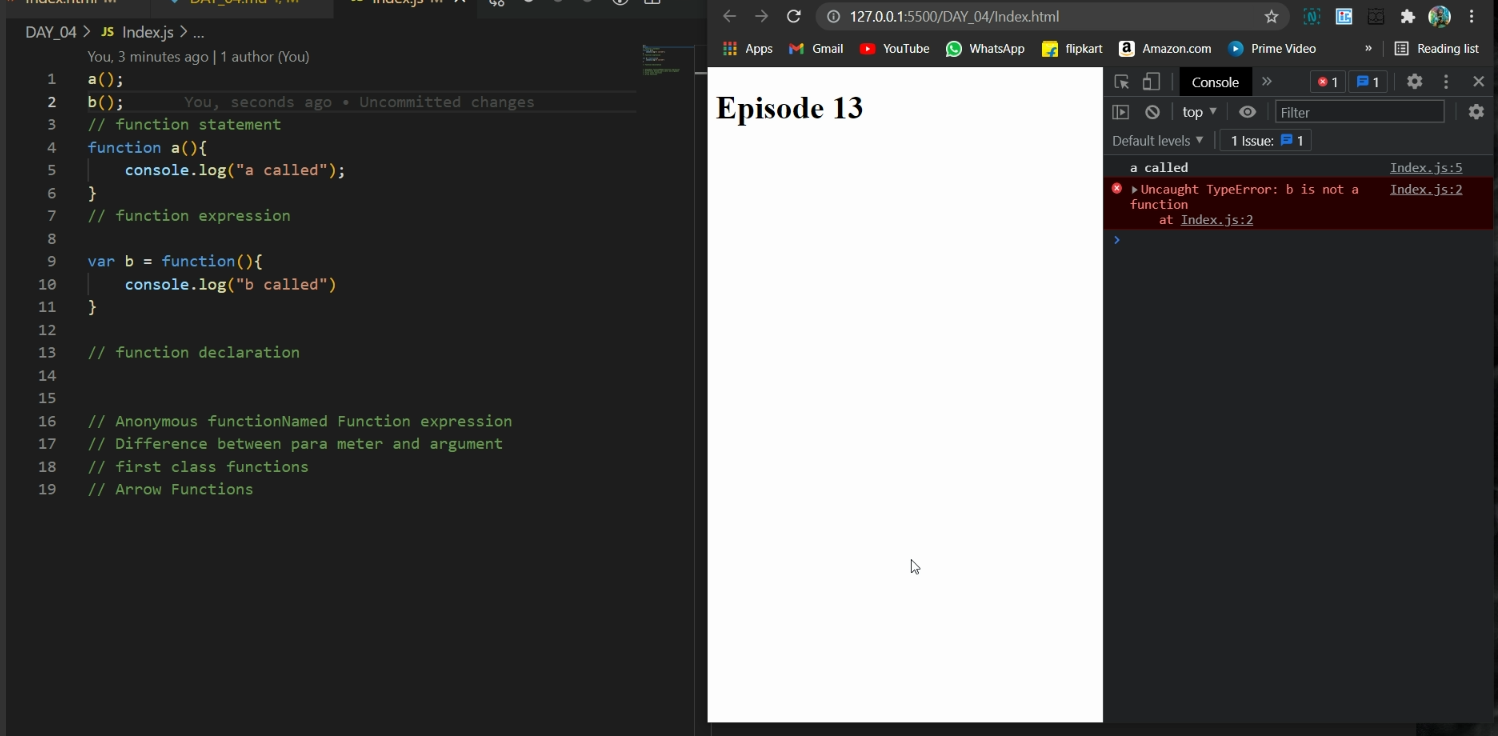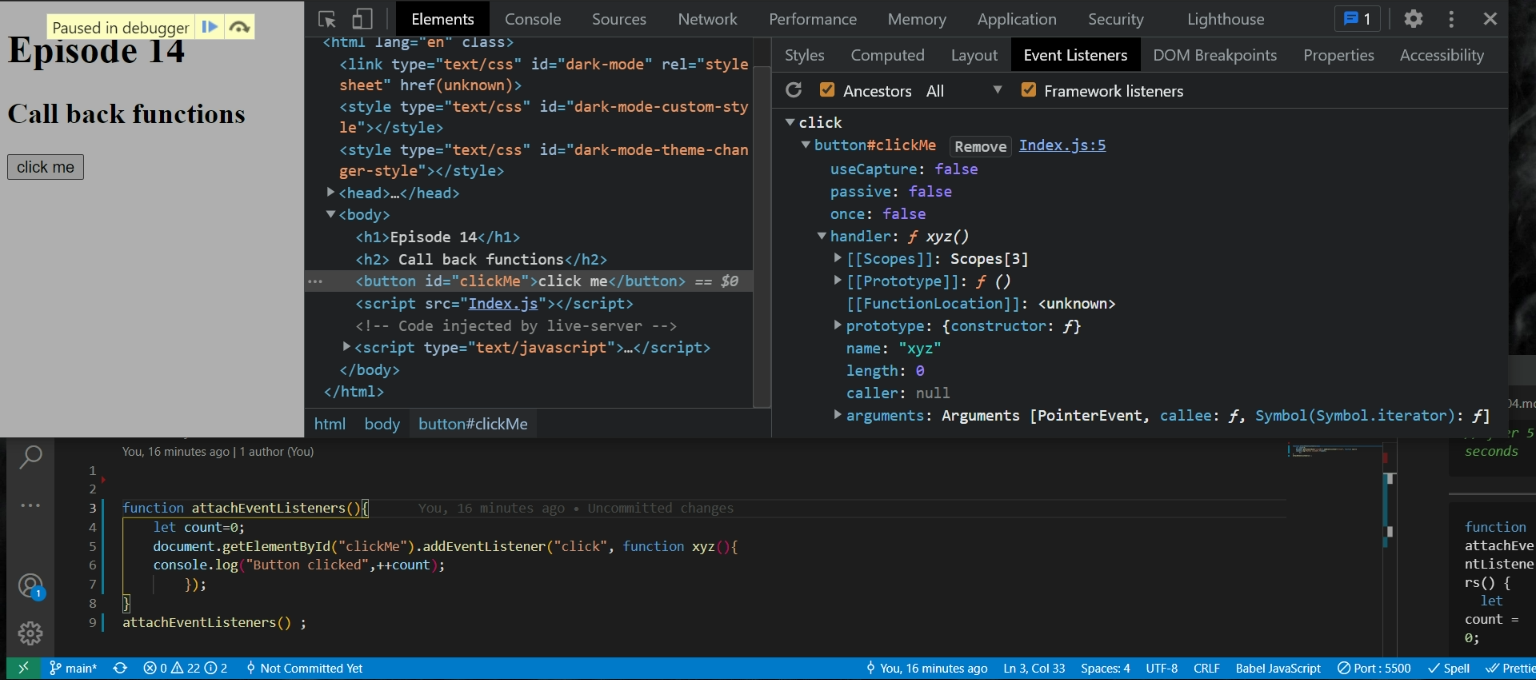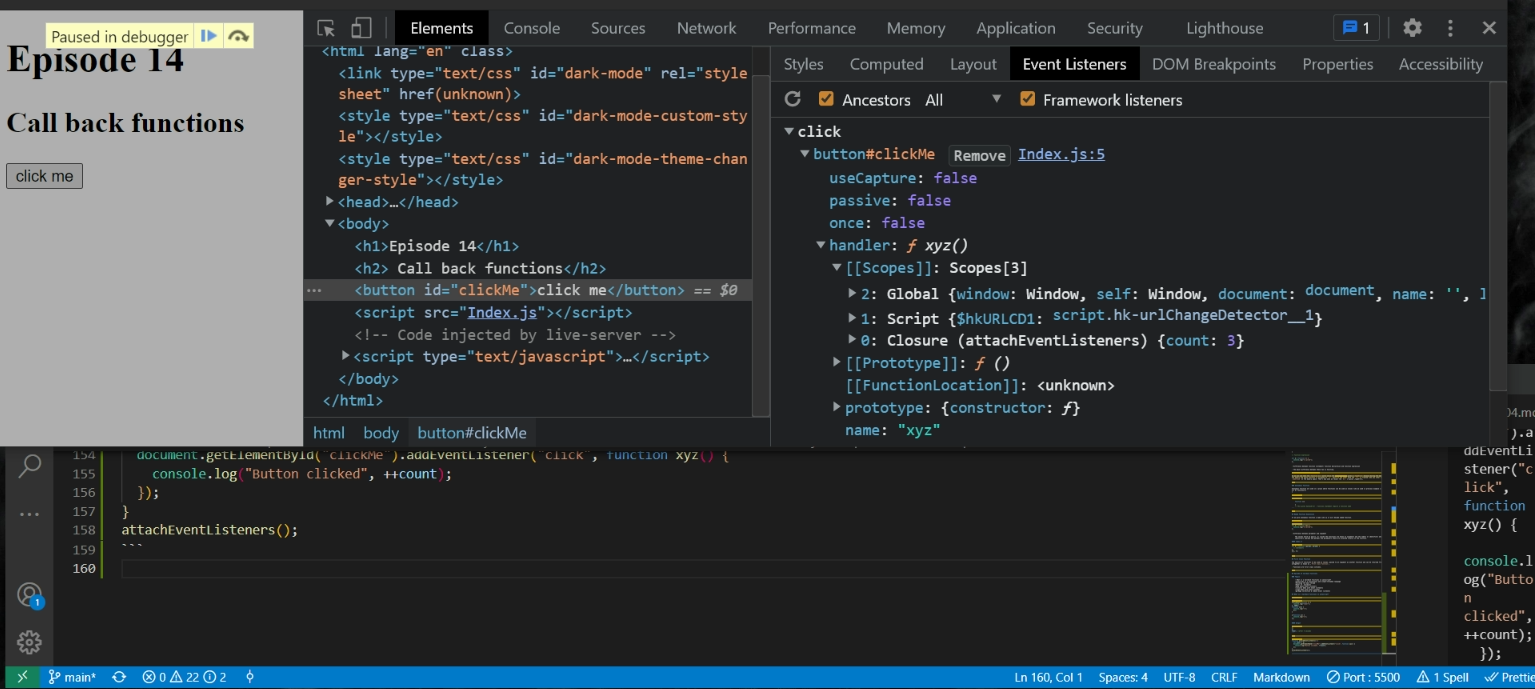30DaysJavaScript
Episode 13 First Class function ft. Anonymous Functions
Today’s Topics
function statement
function expression
function declaration
Anonymous functionNamed Function expression
Difference between para meter and argument
first class functions
Function statement
function a{
console.log("a called");
}
Function Expression
var b = function () {
console.log("b called");
};
Index.js
a();
b();
// function statement or function declaration
function a() {
console.log("a called");
}
// function expression
var b = function () {
console.log("b called");
};
Difference between function ststement/ function declaration and function expression
- The major difference between these two is hoisting.

As we can see that the function a() works while the ` function b() gives a TypeError because during the memory creation phase ‘a’ is created the memory and whole function is assigned to ‘a’ while on the other hand the ‘b’ is treated like any other variable so it is present as undefined in the memory space. That's why when we recall the b()` it gives TypeError
Anonymous Function
Anonymous function are used in a place where functions can be used as values like we used in previous example i:e var b= function(){ }
Index.js
function (){
}
// This gives SyntaxError : function statement require a function name
Named Function Expression
If we give anonymous function a name like xy it will become named function.
Index.js
var b = function xy() {
console.log("b called");
};
Difference between parameter and argument
The values which we pass(1, 2) inside the functions are known as arguments and the labels or identifiers which gets those values are known as identifiers (param1 and param2).The parameters these are accessed locally in the function.
Index.Js
var b = function (param1, param2) {
// statements
};
b(1, 2);
First Class Function
The ability of functions to be used as values, passed to an argument as another function and can be returned from the function. This ability altogether is known as First class function
Functions are first class citizens.
Episode 14 Callback functions
Topics
- What is a Callback functions in javascript?
-Javascript is a synchronous and single-threaded language
-Blocking the main thread
-Power of Callbacks
-Deep about Event listeners
-closures demo with event listeners
-scope demo with event listener
-garbage collection & remove event listeners
What is a Callback functions in javascript?
Callbacks are a great way to handle something after something else has been completed. By something here we mean a function execution. If we want to execute a function right after the return of some other function, then callbacks can be used.
JavaScript functions have the type of Objects. So, much like any other objects (String, Arrays etc.), They can be passed as an argument to any other function while calling.
Index.js
setTimeout(function () {
console.log("timer");
}, 5000);
function x(y) {
console.log("x");
y();
}
x(function y() {
console.log("y");
});
Output
x;
y;
timer; //after 5 seconds
callback functions in Developer tools
 callback functions showing All scopes in Dev mode
callback functions showing All scopes in Dev mode

Garbage collection and remove Event listener
index.js
function attachEventListeners() {
let count = 0;
document.getElementById("clickMe").addEventListener("click", function xyz() {
console.log("Button clicked", ++count);
});
}
attachEventListeners();
Why do we need to remove EventListener?
The EventListeners takes memory . Whenever an eventListener is attached it forms the closures or even when the call stack is empty.